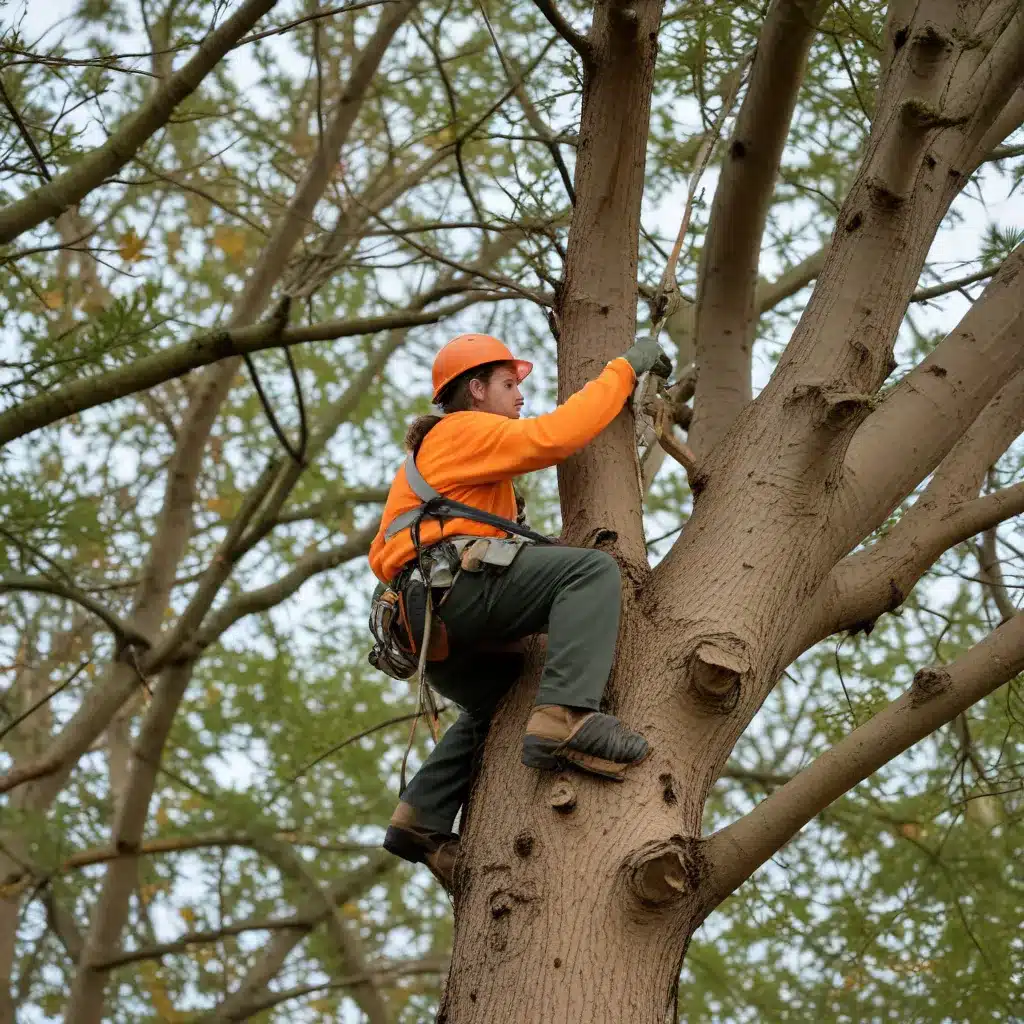
As tree care specialists at TriCounty Tree Care, we understand the profound connection between the natural world and the health of our urban and suburban forests. Much like the intricate dance of the seasons, the lives of trees undergo a captivating cycle of dormancy, growth, and resilience. By aligning our maintenance practices with these rhythms, we can ensure the long-term vitality and ecological balance of the trees in our care.
Tree Life Cycle and Phenology
Seasonal Changes in Trees
Trees, as perennial plants, exhibit a remarkable sensitivity to the cyclical changes in their environment. Each season ushers in a distinct set of challenges and opportunities for these silent giants, shaping their physiological processes and external appearances.
Dormancy and Leaf Shedding
As the days grow shorter and temperatures dip, deciduous trees prepare for their winter slumber. The reduction in daylight triggers the abscission process, where trees shed their leaves to conserve resources and reduce water loss during the colder months. This dormant state allows them to weather the harshness of winter, protecting their vital cambium and buds until the arrival of spring.
Spring Emergence and Growth
With the return of longer days and warmer weather, trees awaken from their dormancy. The bud break signals the start of a new growing season, as leaves unfurl and the tree’s vascular system springs back to life. This period of active growth is fueled by the tree’s stored reserves, allowing it to rapidly produce new foliage, flowers, and woody tissues.
Tree Care Practices
Recognizing the nuances of a tree’s seasonal life cycle is crucial for developing effective maintenance strategies. By aligning our actions with these natural rhythms, we can ensure the long-term health and resilience of the trees under our care.
Pruning and Trimming
Pruning is a fundamental aspect of tree care, and the timing of this practice can significantly impact a tree’s response. During the dormant winter months, pruning stimulates the apical dominance, encouraging the tree to focus its energy on developing new growth in the spring. Conversely, summer pruning can disrupt the tree’s photosynthetic capacity, making it more vulnerable to stress.
Fertilization and Soil Management
The application of fertilizers and the management of soil conditions must also be tailored to the seasons. In early spring, when trees are actively growing, the addition of slow-release, nitrogen-rich fertilizers can support robust foliage development and root growth. As the season progresses, the focus shifts to maintaining soil moisture and aeration to sustain the tree’s nutrient uptake.
Pest and Disease Control
Many tree pests and pathogens exhibit seasonal patterns in their life cycles, making the timing of treatment crucial. For example, certain fungal diseases may be more prevalent during the cool, moist conditions of spring, while certain insect infestations may peak during the warmer summer months. By aligning our integrated pest management strategies with these seasonal trends, we can maximize the effectiveness of our control measures.
Environmental Factors
The health and maintenance of trees are inextricably linked to the environmental conditions in which they thrive. Understanding the interplay between these factors and the tree’s seasonal rhythms is essential for developing a comprehensive approach to tree care.
Climate and Weather Patterns
Shifts in temperature, precipitation, and sunlight intensity can profoundly impact a tree’s growth and resilience. Extreme weather events, such as late-spring frosts or summer droughts, can disrupt a tree’s normal physiological processes, leading to stress and vulnerability to pests and diseases.
Soil Conditions and Terrain
The characteristics of the soil, including its pH, nutrient content, and drainage, can vary significantly across seasons. Maintaining optimal soil conditions, particularly during critical growth periods, is crucial for supporting a tree’s overall health and longevity.
Ecological Interactions
Trees do not exist in isolation; they are part of a complex, interconnected ecosystem. The seasonal fluctuations in wildlife populations, the presence of competing vegetation, and the dynamics of nutrient cycling can all influence a tree’s growth and resilience. By understanding these ecological relationships, we can develop holistic management strategies that preserve the natural balance of the landscape.
Sustainable Tree Management
In an era of climate change and environmental uncertainty, the need for sustainable tree care practices has become increasingly vital. By aligning our maintenance protocols with the rhythms of nature, we can ensure the long-term health and ecological benefits of the trees in our care.
Preserving Ecosystem Balance
Trees play a crucial role in maintaining the delicate balance of urban and suburban ecosystems. By adapting our practices to the seasonal needs of trees, we can support their ability to provide essential ecosystem services, such as air purification, stormwater management, and habitat for wildlife.
Long-term Tree Health
Embracing a seasonal approach to tree care fosters the long-term vitality of our urban and suburban forests. By tailoring our maintenance practices to the specific requirements of each season, we can minimize stress, optimize growth, and enhance the overall resilience of the trees under our stewardship.
Adapting to Climate Change
As the global climate continues to shift, the need to adapt our tree care strategies becomes increasingly pressing. By aligning our practices with the evolving seasonal patterns, we can help trees better cope with the challenges posed by a changing environment, ensuring their continued presence and ecological benefits for generations to come.
At TriCounty Tree Care, we are committed to providing our clients with the highest level of expertise in tree care. By embracing the rhythms of nature and integrating seasonal best practices into our maintenance protocols, we strive to nurture the health and longevity of the trees that grace our communities. Join us in this journey of sustainable tree care, as we work together to preserve the natural wonder and ecological significance of our urban and suburban forests.


